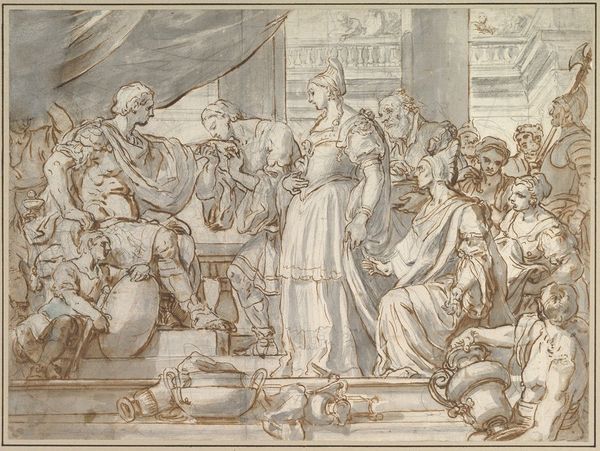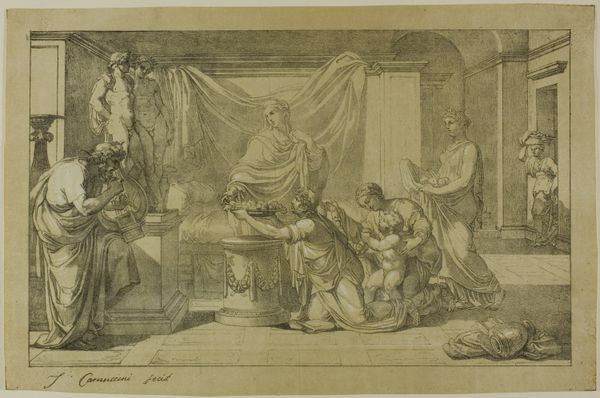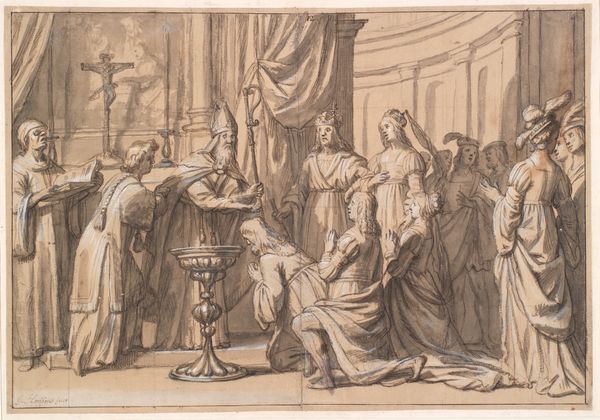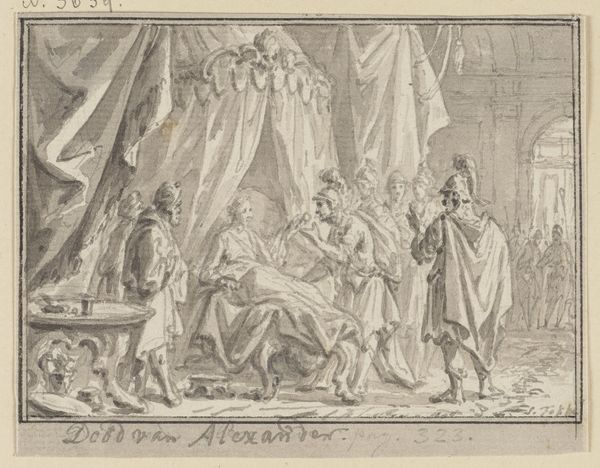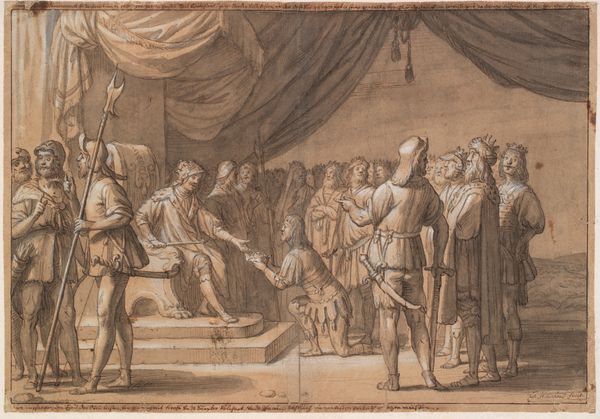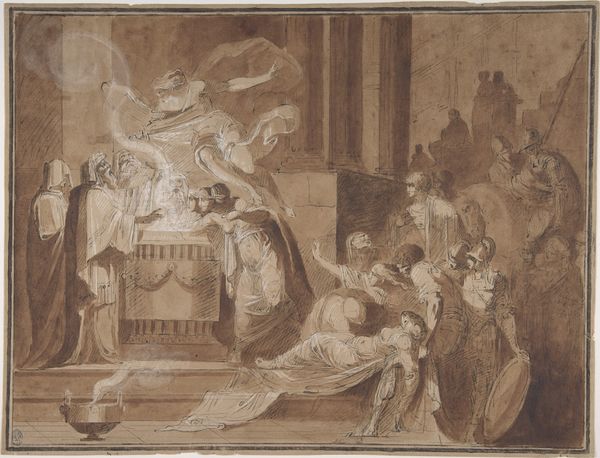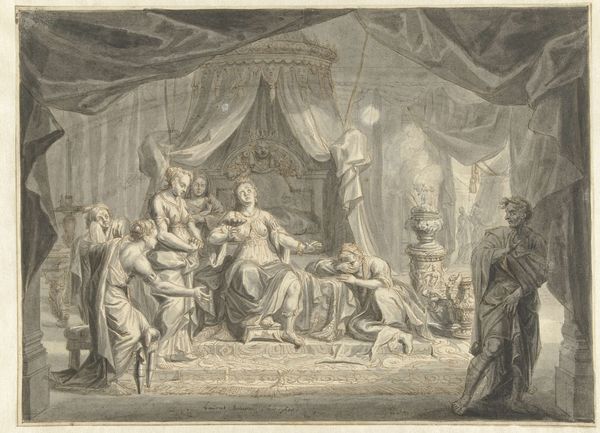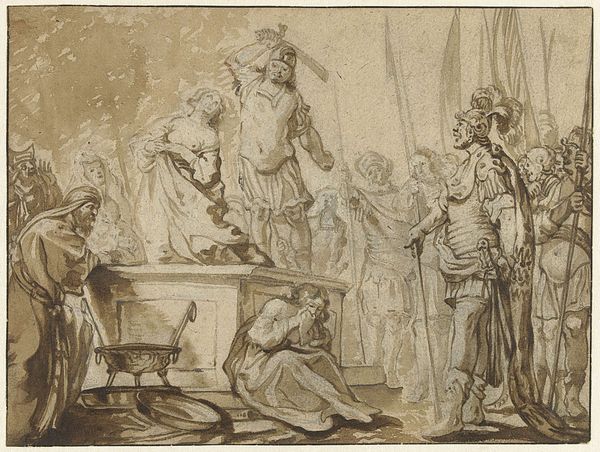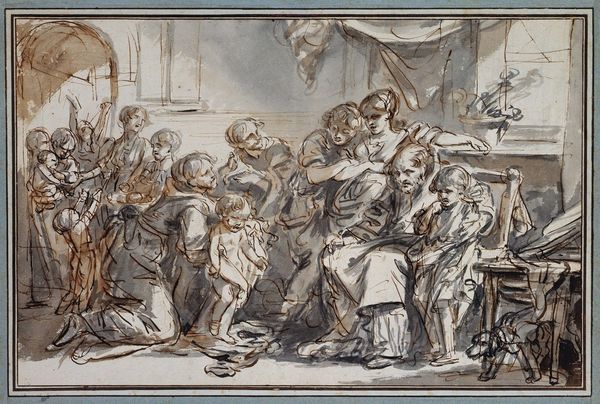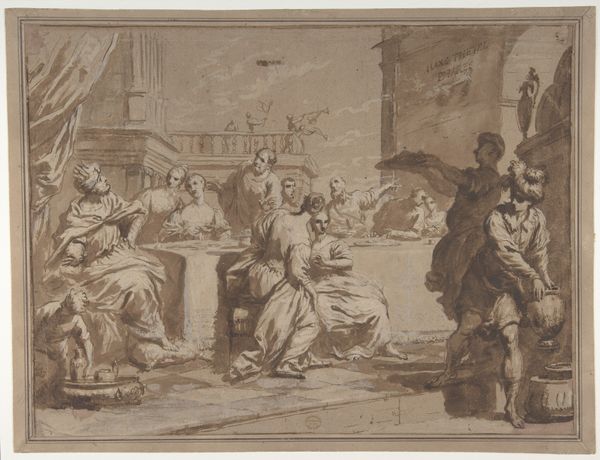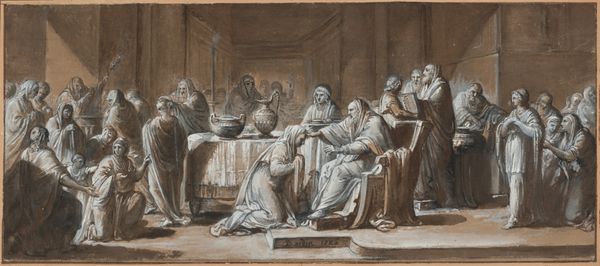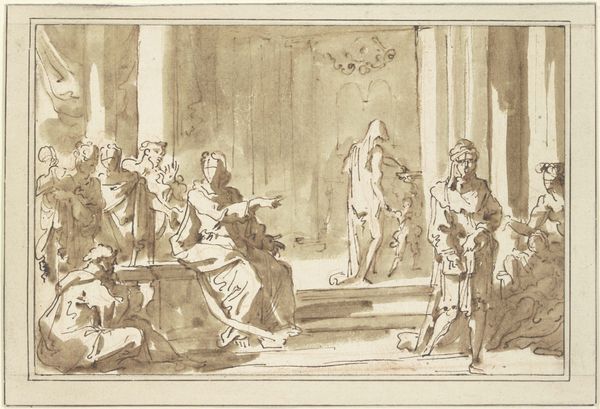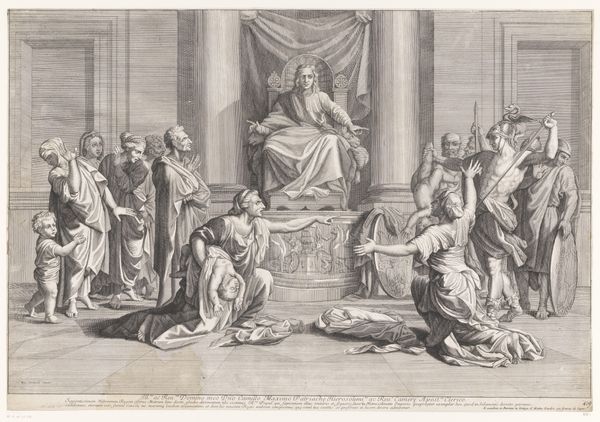
Dimensions: 20 1/2 x 26 5/16 in. (52.1 x 66.9 cm) (image)32 7/8 x 38 x 1 3/4 in. (83.5 x 96.52 x 4.45 cm) (outer frame)
Copyright: Public Domain
Jean-Baptiste Greuze’s drawing, "The Return of the Young Hunter," presents us with a scene rendered in muted earth tones, primarily browns and creams, achieving a softened, almost dreamlike quality. The figures, arranged in a shallow, frieze-like composition, convey a sense of domestic tranquility punctuated by the excitement of the hunter’s return. Greuze masterfully uses line and shadow to define forms and evoke emotions. The artist’s rendering of fabrics and skin creates subtle contrasts in texture, engaging the viewer through the tactile quality of the drawing. The composition is structured to emphasize the familial reunion, with gestures and gazes directing our attention to the returning hunter. The setting, a classical interior, speaks to the values and aspirations of the Enlightenment era. However, the softened lines and subdued palette perhaps destabilize the period's emphasis on clarity and reason, instead inviting a more sentimental, emotive response. This tension between form and emotional content is quintessential Greuze, marking a moment of transition in art history.
Comments
minneapolisinstituteofart almost 2 years ago
⋮
Modern viewers find Jean-Baptiste Greuze’s theatrical stagings melodramatic and contrived—akin to soap operas. But in his lifetime, Greuze was widely admired for elevating family drama to high art. The implicit subject here is the joy of parenthood. This emotional scene unfolds in a fashionable Louis XVI interior. A boy who has been out hunting is lovingly embraced by his mother, while his younger sister good-naturedly grasps his arm. The father, a dashing fellow, talks with a servant who accompanied the boy. His graceful ease and stylish dishabille, like the grand setting he inhabits, show that he is a titled man of means. The wide-eyed, round-cheeked little girl is a classic Greuze type, found in countless works by the artist and undoubtedly inspired by his own daughters, who were born in the early 1760s.
Join the conversation
Join millions of artists and users on Artera today and experience the ultimate creative platform.
